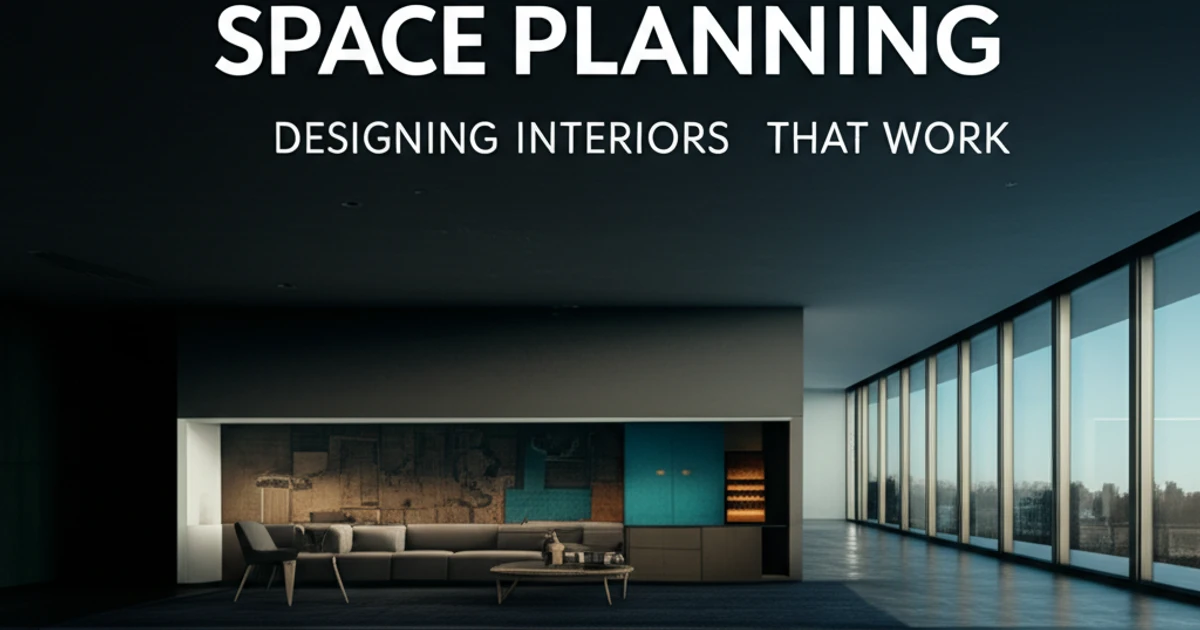Interior Design Hello, design enthusiasts! Whether you're an aspiring er a homeowner dreaming of a more harmonious abode, or a seasoned professional looking for a fresh perspective,you know that a truly beautiful space is more than just a feast for the eyes. It's a symphony of function flow and feeling. Today,we're diving deep into the often-overlooked ,yet utterly fundamental, art of space planning: the secret sauce to designing interiors that don't just look good, but *work* beautifully .
I’ve seen countless projects bustling from commercial offices to tranquil residential havens where the initial spark of aesthetic beauty quickly fizzled because the underlying logic spatial was,well illogical .It’s like buying a stunning car only to find the steering wheel is on the roof – beautiful but utterly unusable. Good space planning is the invisible architect of comfort efficiency and well-being. It’s the some reason rooms just feel 'right' and others leave you feeling restless even if can you't quite put your finger on why . Let's unlock its power together.
What if Your Home Could Breathe?The Unseen Power of Space Planning.
Imagine walking into a room where every step feels intuitive every item has its place,and the air just seems to flow freely . That’s not magic; that’s the outcome deliberate of excellent space planning. At its core space planning is the strategic arrangement of furniture fixtures, and activities within a given area to optimize its function flow,and aesthetics.It’s about envisioning how people will live work and relax in a space *before* the first of piece furniture is even considered .
This isn't just about drawing lines on a floor plan; it's about understanding human behavior,psychology , and the subtle nuances of daily life. It’s considering the path from the kitchen to the dining table the natural light available for a reading nook,or the privacy needed for a home office. Without this thoughtful foundation, even the most exquisite finishes and designer furniture can feel disconnected and uncomfortable.It's the silent hero behind every truly successful design.
Are You Designing a Stage or a Sanctuary ? Understanding Your "Why."
Before you even think about fabric swatches or paint chips yourself ask: *What is the primary purpose of this space? Who will use it and how?* Is it a vibrant family hub a serene retreat a productive workspace or a dynamic entertainment zone? Your answers will dictate every subsequent decision in your functional space design . One homeowner a busy young professional, once told me her living room felt like a "waiting room" – beautiful but entirely devoid of personal connection .We discovered it was designed for show not for *her* life.
By shifting our focus to her daily routines – morning coffee with a book, evening calls with family, occasional small gatherings – we began to transform it. We carved out distinct "zones" within the open-plan space: a cozy reading corner by the window , a conversation area centered around a rug warm ,and a discreet flexible workspace that could be tidied away. This shift from aesthetic-first to purpose-first is a critical "space planning tip. " It ensures your interiors don't just look good , but truly serve the individuals who inhabit them ,becoming a personal sanctuary rather than just a stage.
Beyond Walls: How Do You Sculpt Movement and Light?
Think of your space not as a static box ,as but a dynamic landscape for human movement . How do circulate people through it? Are there clear pathways , or are they constantly navigating around obstacles? These "circulation paths" are the arteries of your home and ensuring they are clear and efficient is paramount to good designing interiors. A common mistake I see is furniture blocking natural thoroughfares leading to a constant sense of and friction awkwardness . Imagine squeezing past a armchair bulky every time you want to get to the balcony – frustrating right?
Beyond movement consider the journey of light. Natural light is a powerful ,mood-enhancing element. How can your space planning maximize its entry and distribution?Are large pieces of furniture blocking windows?Can mirrors be strategically to placed bounce light into darker corners? By carefully arranging furniture and even considering the height of pieces,you can sculpt not just how people move but also how light and shadow play across space your influencing everything from perceived spaciousness to overall mood. This attention to detail elevates a design from merely functional to truly inspiring .
Whispers of Comfort: Where Do Objects Belong? The Art of Functional Zoning .
Once you understand the primary uses of your space the next step in functional space design is to define distinct "zones" for specific activities . In an open-plan living/dining area, for instance might you have a relaxation zone with a comfortable sofa and coffee table a dining zone with a table and chairs and perhaps a small flexible work or play zone.The magic lies in creating these divisions without necessarily building walls. can Rugs anchor zones , furniture placement can act as soft dividers (e. g. , a console table behind a sofa), lighting and can highlight specific areas.
These "space planning tips" are crucial for creating a sense of order and purpose.Think about your daily rituals: where do you drop your keys when you walk in? Where do you read?Where do you enjoy meals?By allocating dedicated spaces you reduce clutter and mental friction.My aunt a serial organizer once revamped her kitchen,meticulously assigning a "home" to every utensil and appliance. The result wasn't just a tidy kitchen but a serene cooking experience where everything was at her fingertips a testament to the power of thoughtful zoning and strategic storage .
The Unsung Hero: Why Does Scale Matter More Than You Think ?
Have you ever walked into a small room with an enormous sofa that swallows the entire space, or a grand room with tiny insignificant furniture ?In both something cases feels off.is This where the concept of scale and proportion comes into play – a critical component of effective space planning tips.Scale refers to the size of an object in relation to other objects to the space it occupies and most importantly to the human body.Proportion is the relationship of various parts of a whole or to the whole itself.
Choosing furniture that is proportionate to the size and height of your room is paramount.An oversized piece can make a small room feel cramped and claustrophobic while undersized items in a large room can make it sparse feel and unwelcoming . Consider the height of your ceilings when selecting bookshelves or draperies , and the width of your hallways when choosing consoles . A well-proportioned room feels inherently balanced and comfortable like a well-tailored suit – it just fits.This is a subtle yet profound element of interiors designing that truly work.
Your Blueprint for Joy: Crafting a Home That Truly Works for You .
Ultimately space planning isn't just a technical exercise; it's an act of profound empathy. It's about designing environments that support and enhance the lives lived within them.It's about ensuring that every corner of your home, every office space every classroom facilitates ease comfort , and joy. interior For designers,mastering space planning is your superpower , allowing you to create that spaces resonate deeply with your clients. For homeowners and students it's the key to transforming a mere structure into a living breathing sanctuary tailored perfectly to you.
So take a fresh look at your own space .Observe how you move, where you pause, what feels effortless and what creates friction.Start small, perhaps by rearranging a single area applying these space planning tips.You’be ll amazed at the transformative of power thoughtful functional space design . Remember, a well-planned interior isn't just beautiful; it's a blueprint for a better way to live.
---
["space planning", "" "functional design" "home organization" "design tips" "living spaces" "homeowners" "students design" ,"E-E-A-T"]


